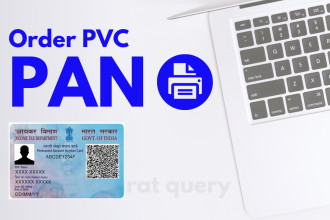Cybercrime is a growing concern in our increasingly digital world. Whether you’ve been a victim of online fraud, hacking, identity theft, cyber harassment, or any other form of digital offense in India, it’s crucial to know how to report cybercrime effectively. Filing a complaint is the first step towards seeking justice, preventing further harm, and contributing to a safer online environment for everyone. This guide will walk you through how to file a cybercrime complaint in India, providing you with a clear, step-by-step process and essential resources to take action.
Understanding Cybercrime in India
Cybercrime encompasses a wide range of illegal activities conducted through computers, the internet, and related technologies. In India, common types of cybercrime include:
- Online Financial Fraud: This includes UPI fraud, credit/debit card fraud, phishing scams, online investment scams, and e-commerce fraud.
- Identity Theft: Stealing someone’s personal information (like Aadhaar details, PAN, bank account details, social media credentials) for fraudulent purposes.
- Cyber Harassment and Bullying: Online abuse, stalking, defamation, and threats through social media, messaging apps, or email.
- Hacking and Data Breaches: Unauthorized access to computer systems, networks, or personal accounts to steal data, disrupt services, or cause damage.
- Ransomware Attacks: Malware that encrypts data and demands a ransom for its release.
- Online Scams: Job scams, lottery scams, romance scams, and other deceptive schemes conducted online.
- Child Sexual Abuse Material (CSAM): Creation, distribution, and possession of illegal content involving children.
- Social Media Crimes: Fake profiles, online defamation, spreading misinformation, and account hacking on social media platforms.
Step-by-Step Guide: How to File a Cybercrime Complaint in India (Online & Offline)
India has established a robust framework for reporting and addressing cybercrime. You can file a complaint both online and offline. The online method is generally recommended for its speed and convenience.
Method 1: Filing a Cybercrime Complaint Online (Recommended)
The National Cyber Crime Reporting Portal (https://cybercrime.gov.in/) is the official platform of the Government of India to report cybercrime incidents. It’s a user-friendly and efficient way to register your complaint.
- Visit the National Cyber Crime Reporting Portal: Open your web browser and go to https://cybercrime.gov.in/.
- Choose Reporting Option: On the homepage, you will see two main options:
- “Report Cyber Crime”: Click on this button to file a complaint about general cybercrime incidents.
- “Report Crime against Women & Children”: Use this option specifically for crimes targeted at women and children, including online harassment, stalking, and child sexual abuse material. This option provides a sensitive and specialized reporting mechanism.
- Select Incident Category: You will be presented with a list of cybercrime categories. Choose the category that best describes the incident you are reporting. Examples include:
- Online Financial Frauds
- Social Media Related Crimes
- Hacking
- Ransomware
- Online Harassment/Stalking
- Child Pornography/Child Sexual Abuse Material
- Other Cyber Crimes
- File a Complaint – “File a Complaint” Button: After selecting the category, click on the “File a Complaint” button.
- Accept Disclaimer: Read the disclaimer carefully and click “I Accept” to proceed.
- Citizen Login: You will be directed to the Citizen Login page. You have two options:
- Login using OTP (Recommended): Enter your mobile number and click “Get OTP”. You will receive a One-Time Password (OTP) on your mobile. Enter the OTP and click “Login”. This is the faster and recommended method.
- Login using User ID & Password: If you have previously registered on the portal, you can log in using your User ID and Password. If you are a first-time user, using the OTP method is simpler.
- Fill in Complaint Details – Part 1 (Incident Details): You will be presented with a multi-part form. In Part 1 – Incident Details, provide information about the cybercrime incident:
- Incident Date and Time: Enter the date and time when the incident occurred (as accurately as possible).
- Category and Sub-category of Complaint: Re-confirm the category and select a more specific sub-category of the crime from the dropdown menu.
- Brief Description of the Incident: Clearly and concisely describe what happened. Provide a factual account of the cybercrime incident. Be specific and avoid emotional language.
- Suspect Details (if known): If you have any information about the suspect (name, online profile, email address, phone number, etc.), provide it here. Even partial information can be helpful.
- Website/App/Platform Details: Specify the website, app, social media platform, or online service where the cybercrime took place (e.g., Facebook, Instagram, WhatsApp, a specific e-commerce website, a banking app).
- Financial Loss (if applicable): If you have suffered financial loss due to the cybercrime, accurately state the amount lost in Indian Rupees (INR).
- Fill in Complaint Details – Part 2 (Suspect Details): In Part 2 – Suspect Details, provide more information about the suspect if available:
- Name of Suspect (if known):
- Address (if known):
- Contact Number (if known):
- Email ID (if known):
- Social Media Profile Link/Username (if known):
- Any other relevant details about the suspect.
- Fill in Complaint Details – Part 3 (Complainant Details): In Part 3 – Complainant Details, provide your personal information:
- Name: Your full name.
- Address: Your complete residential address.
- Contact Number: Your mobile phone number.
- Email ID: Your email address.
- Identity Proof (Optional but Recommended): You can upload a scanned copy of your Aadhaar card, PAN card, Voter ID, or Passport as identity proof. This helps in verifying your complaint and adds credibility.
- Review and Submit: Carefully review all the information you have entered in all sections of the form. Ensure accuracy and completeness. Once you are satisfied, click the “Submit” button.
- Complaint Acknowledgement and Reference Number: After successful submission, you will receive an acknowledgement message with a Complaint Reference Number. Note down this reference number carefully. It is essential for tracking the status of your complaint and for future communication. You may also receive an SMS or email confirmation with the reference number.
Method 2: Filing a Cybercrime Complaint Offline
If you prefer to file a complaint offline, or if you are facing difficulties with the online portal, you can visit a Cyber Crime Cell or a local Police Station.
- Locate the Nearest Cyber Crime Cell or Police Station:
- Cyber Crime Cell: Many major cities in India have dedicated Cyber Crime Cells or Cyber Police Stations. You can search online for “Cyber Crime Cell near me” or “Cyber Police Station [Your City Name]” to find the nearest one. You can also check your local police department’s website.
- Local Police Station: You can also file a cybercrime complaint at your local police station. Inform them that you want to register a cybercrime complaint, and they will guide you or direct you to the appropriate officer.
- Visit the Cyber Crime Cell or Police Station: Go to the identified Cyber Crime Cell or Police Station during their working hours.
- Meet with the Cybercrime Officer or Duty Officer: Inform the officer on duty that you want to file a cybercrime complaint. You will be directed to a Cyber Crime Officer or a designated officer who handles cybercrime complaints.
- Explain Your Complaint: Clearly and calmly explain the cybercrime incident to the officer. Provide all relevant details, dates, times, locations, suspect information (if any), and financial losses.
- Submit a Written Complaint: It is advisable to submit a written complaint in addition to verbally explaining the incident. Prepare a written complaint in a clear and structured manner, including:
- Your Name, Address, Contact Details
- Date and Time of Incident
- Location of Incident (online platform, website, etc.)
- Detailed Description of the Cybercrime
- Suspect Details (if known)
- Evidence (screenshots, transaction details, emails, messages, URLs – if possible, provide copies of digital evidence in a pen drive or CD, if requested)
- Financial Loss (if applicable)
- Relief Requested (what action you want the police to take)
- Provide Evidence:Provide any evidence you have collected related to the cybercrime. This can include:
- Screenshots of online conversations, social media posts, fraudulent transactions, etc.
- Transaction details (bank statements, payment confirmations, etc.) for financial fraud cases.
- Emails, messages, chat logs related to the incident.
- URLs of websites or social media profiles involved.
- Device details (IP address, device ID – if you have technical knowledge to obtain these).
- File the Complaint and Get Acknowledgement: Submit your written complaint and evidence to the Cyber Crime Officer. Request an acknowledgement or a copy of the complaint with a Diary Number or FIR (First Information Report) number. This acknowledgement is important for tracking your complaint.
- Cooperate with the Investigation: Be prepared to cooperate with the police investigation. Provide any further information or assistance they may require.
Key Information and Documents to Gather Before Filing a Complaint
To make the complaint process smoother and more effective, gather as much of the following information and documents as possible before filing:
- Details of the Incident: Date, time, location (website/app/platform), and a clear description of what happened.
- Suspect Information (if known): Name, online profiles, email addresses, phone numbers, or any other identifying details.
- Financial Loss Details (if applicable): Amount lost, transaction details, bank statements, payment screenshots.
- Digital Evidence: Screenshots, emails, messages, chat logs, URLs, website links, social media profile links. Save digital evidence securely and do not tamper with it.
- Your Identity Proof: Aadhaar card, PAN card, Voter ID, Passport (for verification purposes).
- Contact Information: Your mobile number and email address.
After Filing a Cybercrime Complaint: What to Expect
- Complaint Registration and Preliminary Inquiry: Your complaint will be registered, and a preliminary inquiry may be initiated by the Cyber Crime Cell or Police.
- Investigation: If the complaint discloses a cognizable cybercrime offense, a formal investigation may be launched. The police may investigate the technical aspects of the crime, trace online activity, and gather evidence.
- Communication and Updates: Keep in touch with the Cyber Crime Cell or Police Station handling your case. You can use your Complaint Reference Number or FIR number to inquire about the status of your complaint.
- Legal Process: Depending on the nature and severity of the cybercrime, the case may proceed through the legal system, potentially leading to the identification, apprehension, and prosecution of the accused.
- Prevention and Awareness: Reporting cybercrime helps not only in addressing your specific case but also in contributing to broader efforts to prevent cybercrime and raise public awareness.
Important Contact Information & Resources
- National Cyber Crime Reporting Portal: https://cybercrime.gov.in/ (Official Government of India Portal)
- National Cyber Crime Helpline Number: 1930 (24×7 Helpline – for reporting financial frauds)
- State Cyber Crime Cells/Police Stations: Search online for “[Your State/City Name] Cyber Crime Cell” or visit your State Police website for contact details.
- Nearest Local Police Station: You can always approach your nearest local police station to register a cybercrime complaint.
Take Action Against Cybercrime Today!
If you have been a victim of cybercrime, remember that you are not alone and help is available. Do not hesitate to report the incident. Filing a complaint is a crucial step towards seeking justice, protecting yourself and others, and combating the growing menace of cybercrime in India. Use the online portal or approach your nearest Cyber Crime Cell or Police Station to report cybercrime incidents and contribute to a safer digital India.





